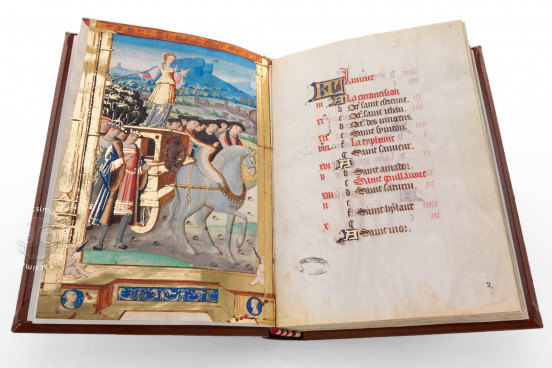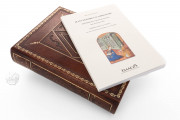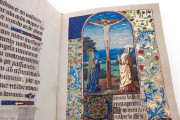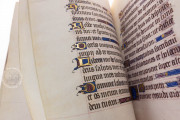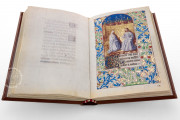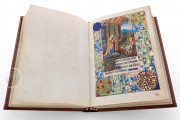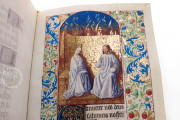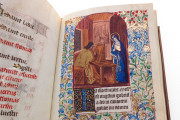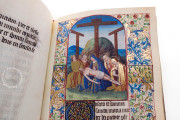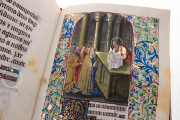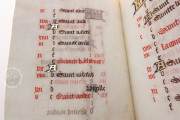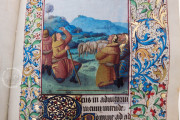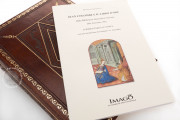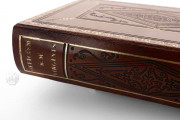The book of hours MS Ross 198 is believed to have been produced in Bourges, France, during the fifteenth century, commissioned by an unknown patron. After passing from hand to hand, the manuscript finally came into the possession of one of the most renowned bibliophiles and collectors of the time, Giovan Francesco de Rossi (1796-1854). Based on a comparison with the Très Riches Heures of the Duke of Berry, it has been argued that the decoration of MS Ross 198 could be attributed to the workshop of Jean Colombe, if not to Colombe himself.
Measuring 23.2 x 17.3 cm, the manuscript would be one of the largest manuscripts produced by Colombe's workshop. After an initial illuminated page, the manuscript features a series of twenty miniatures introducing different textual sections, the decorative scheme beginning with the decoration of the Gospel Pericopes.
A Later Frontispiece by a Different Hand
At the beginning of the text, an illuminated page depicting the Triumph of Fame was added at an uncertain time, serving as a frontispiece. The scene, set in a landscape with towers and mountains, portrays a chariot with Fame triumphing over Death, who sits just below her. This illumimation can be attributed to the hand of the Master of the Hours of Ango, an illuminator active between the first and third decades of the sixteenth century in Rouen, named after a book of hours held in the Bibliothèque nationale de France (MS nouv. acq. lat. 392).
A History Filled with Relocations
At an unknown time, Giovan Francesco de Rossi acquired the manuscript, which later followed the trajectory of his library. Five months after de Rossi's death in 1854, his wife Luisa Carlotta donated his entire library to the Jesuits. About fifteen years later, however, the Society of Jesus was suppressed, and in 1873 the whole collection was moved to the Austrian-Hungarian embassy at Palazzo Venezia, then to Vienna in the sacristy of the Jesuit House on Universitätsstraße (1877), and later to the Jesuit residence in the suburb of Lainz (1895). After World War I, the defeat of Austria led to the return of the Rossiana library to Italy. The collection became part of the Biblioteca Apostolica Vaticana on December 23, 1921.
We have 1 facsimile edition of the manuscript "Officium Beate Marie Virginis Ross. 198": Offiziolo di Jean Colombe facsimile edition, published by Imago, 2017
Request Info / Price
